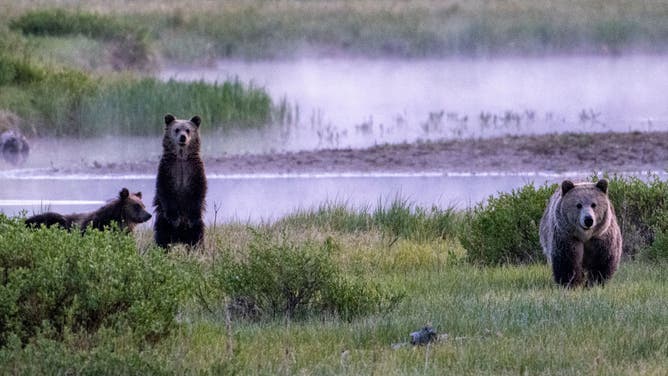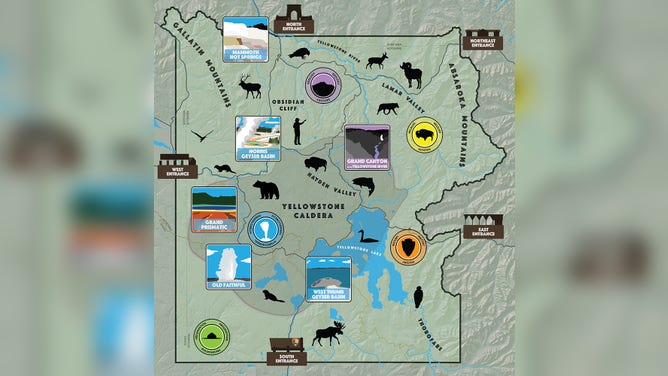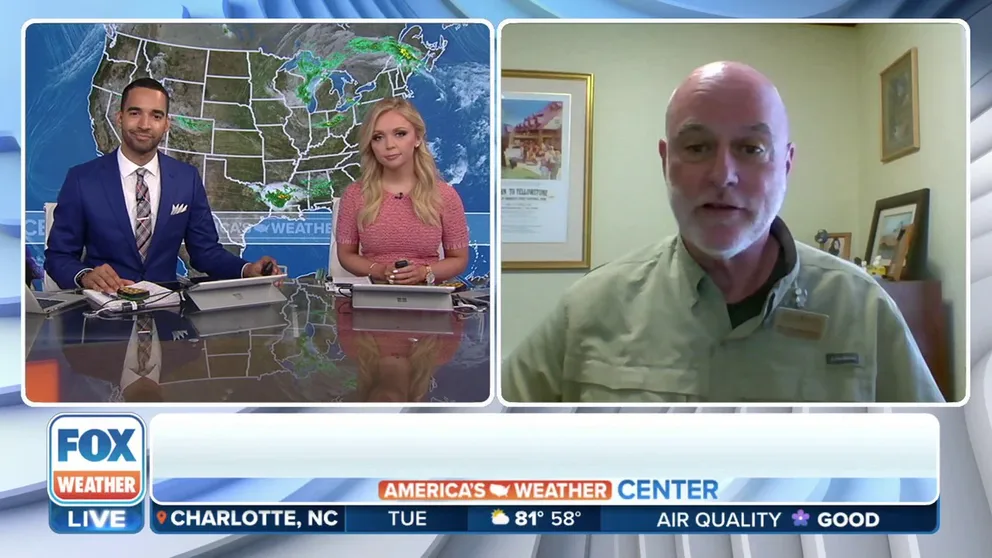Experts debunk viral claims that animals are fleeing Yellowstone National Park
Social media has been flooded with claims that animals are fleeing Yellowstone National Park due to impending volcanic activity in the region — a claim that scientists say is not supported by any evidence.
Visitor numbers are up a year after Yellowstone flooding
Director of Sales and Marketing for Yellowstone National Park Lodges Rick Hoeninghausen says visitors are returning this year after historic flooding closed the park last June. Hoeninghausen describes moving guests and employees out of harms way during the flooding event.
YELLOWSTONE NATIONAL PARK, Wyo. – Social media has been flooded with claims that animals are fleeing Yellowstone National Park due to impending volcanic activity in the region - a claim that scientists say is not supported by any evidence.
According to park experts, the latest misinformation campaign began shortly after the Fourth of July, when a video surfaced claiming to show mountain lions leaving the park.
The problem with the alleged sighting? The animals in the video were cougars, and it appears the incident took place during the winter after a snowfall.
Another video making the rounds online allegedly showed bears leaving the park, but here too, wildlife experts said the claims were far-fetched.
"The animals were hugely fat and not behaving as they would in the wild, and the landscape and vegetation looked nothing like Yellowstone. Internet sleuths eventually traced the location of the video to a drive-through wildlife park in South Dakota," experts stated.
Despite the false nature of the videos, the posts went viral, racking up millions of views, with some media outlets even referring to the incidents as a ‘mass animal exodus.'

YELLOWSTONE NATIONAL PARK, WYOMING -JUNE 21: A Grizzly bear and her two cubs walk along Pelican Creek on June 21, 2024. in Yellowstone National Park, Wyoming.
(Photo by Jonathan Newton/Getty Images / Getty Images)
SEE THE EXTREME WEATHER VISITORS AT NATIONAL PARKS EXPERIENCE
"This isn’t the first time we’ve seen this kind of thing," Michael Poland, a geophysicist with the U.S. Geological Survey and scientist-in-charge at the Yellowstone Volcano Observatory, said in a weekly column. "The myth that animals are fleeing Yellowstone comes up every year or two, and sometimes it grows to ridiculous proportions."
While bison, elk, grizzly bears, wolves and mountain lions are all native to the more than 2-million-acre park, the animals are naturally always on the move, searching for prey, finding shelter or preparing for seasonal changes.
It is unclear what triggered the latest round of misinformation, but Poland suggested it might have been fueled by the recent discovery of a new thermal feature in the Norris Geyser Basin.
While thermal features such as geysers, hot springs and mudpots are common throughout parts of the National Park, some people interpret scientific findings as signs of an impending disaster and begin searching for any hints of unusual behavior.

Yellowstone National Park map
(National Park Service / FOX Weather)
TEEN SUFFERS SEVERE THERMAL BURNS TO FOOT DURING HIKE ALONG YELLOWSTONE NATIONAL PARK GEYSER
The park does have an extensive volcanic history, but the last major eruption is believed to have occurred more than half a million years ago.
The U.S. Geological Survey says that while another catastrophic eruption at Yellowstone is possible, the agency is not convinced that one will ever happen.
Data suggests that the magma chamber beneath the region is only 5-15% molten, which is not thought to be extensive enough to produce a significant eruption, the USGS says.
"…the next time you hear that animals are, once again, fleeing Yellowstone in droves, we would suggest a healthy dose of skepticism," staff stated.
